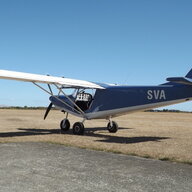Not a UFO story, but a what-I-am-seeing-can't-be-happening event that fairly boggled my mind at the time:
Mid 70's I was maintaining Sperry Univac mainframe gear, including twinned CSPs (Communications and Symbiont Processors) on one site. These were quite large free standing L shaped cabinets that handled all the comms plus miscellaneous local peripherals, and were equipped with rows of large white indicator lights and rocker switches on an upper maintenance panel.
The entire system was still under development, but had run faultlessly for 6months, I was in the workshop some distance away when I heard one of the programmers yelling my name.
Sticking my head out the door what I saw were all the indicator lights, which normally flickered with a pleasing dull pearly light, were blazing white as though I was looking into a furnace.
I ran for the thing, and as I ran I yelled 'TURN IT OFF!!!!'
To which the programmer yelled back 'I HAVE, I HAVE' while repeatedly pushing the DC and AC off buttons.
Actually we may have screamed.....I'm pretty sure my voice went up an octave.
These machines all had multiple rack mounted power supplies delivering various voltages, with power cabled to junctions under the hollow floor. Arriving at the machine, I tore open the front covers and wiped my hands down all power supplies, knocking all the front mounted internal breakers off.
Jumped back......and the lights were still all blazing. At which point, for just a moment, I literally was not believing my eyes. Hard to describe, it was quite a jolt.
For the rest: I ran and got the floor sucker, we now had smoke as well and I was tearing up the floor tiles looking for the underfloor connections to pull them. Comedy note at this point was provided by the suite manager, who danced round my hole in the floor with a fire extinguisher yelling 'SHOULD I HIT IT, SHOULD I HIT IT?' as I flung 2' square steel reinforced tiles this way and that.
I had not located the the underfloor feeds when it finally quite suddenly all went off: something of a relief as I wasn't looking forward to pulling live feeds.
The entire system was down, (though most of the smoke was at the CSPs and the Modem Room).
So we (techs) all went for a cup of coffee.
And after about 20minutes our chief tech walked down and put his finger precisely on the problem.
Any old techs here care to take a shot at what it was?
(I should have said that the CSPs were part of a much larger 2 x 2 multi-cabinet mainframe system distributed over an entire floor of a large building.)










